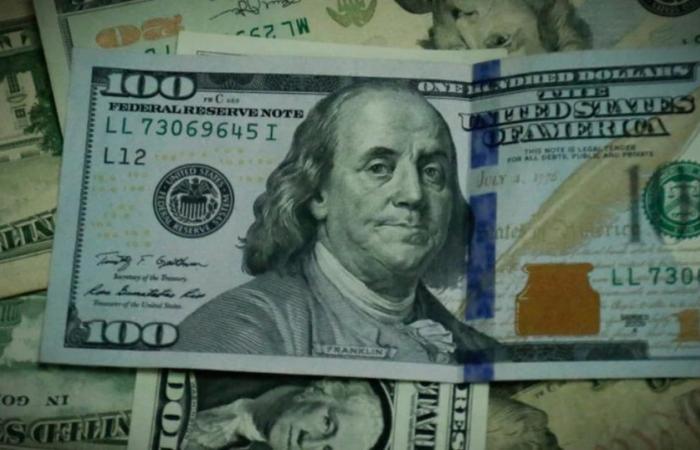
Although the BCRA and the Minister of Economy Luis Caputo They ensure that the crawling peg will remain at 2% monthly, the market expects a higher devaluation rate.
In this sense, in the Matba-Rofex futures market, contracts expiring on June 30 are trading at $922.5 per dollar, discounting a monthly devaluation of 3.2%, a number that increases to around an increase 5% monthly starting in August.
By the end of the year, dollar futures are trading at $1,236, 20% above the value that the officer should reach following the announced devaluation rate ($1,027 per dollar). “It would seem that the market expects a moderate correction in the value of the currency, but not an abrupt jump like the one experienced in December 2023,” said the Rosario Stock Exchange (BCR) in a report from Julio Calzada and Franco Ramseyer.
“Given the unfounded rumors, we clarify with Santiago Bausilithat if the Bases law is approved, The reduction of the country tax is not associated with any devaluation. Neither the current 80/20 nor the crawling 2 percent”, Caputo had noted on his X account last week.
It happens that the current exchange rate, with this monthly devaluation pattern, is generating a loss of competitiveness.
“When the current government administration took office, the BCRA’s Multilateral Real Exchange Rate was at values close to its historical lows, in a context of the official exchange rate set by the monetary authority at a value close to $366 per dollar. One of the first measures of the current government shortly after taking office was a 118% devaluation that brought the official price of the US dollar to 800 pesos. Since then, the BCRA committed to increasing the nominal exchange rate by 2% monthly, below inflation that reached 25.5% monthly in December, progressively decreasing to 8.8% in April,” the BCR noted. .
“As of June 3, 2024, the real exchange rate had reached a value of 89.1, losing part of the competitiveness achieved at the end of 2023. In historical terms, it is 23% below the 1997-present average. Despite this, it is still 17% above the value that averaged in the period 1997-2001, towards the end of the convertibility period. It is worth remembering that, at that time, the real exchange rate reached a minimum of 68.9 on January 10, 2002, increasing by 200% in subsequent months, reaching a peak of 208.4 on June 25, 2002. said year”, he specified.
“Faced with this situation of loss of exchange competitiveness, added to the level of interest rates (negative in real terms) and the delay in the settlement of exports, the CCL rebounded in recent days, widening the gap with the official one. The price of the CCL, however, is higher than what would be required to bring the real multilateral exchange rate to its historical average. For this, the official dollar price should be around $1,160. This does not mean that financial dollars are going to go down, given that their price depends on multiple determinants of supply and demand, but it is a reference to take into account,” the BCR concluded.
The loss of competitiveness is observed in the low liquidation of agriculture in the middle of the thick harvest. According to the Chamber of the Oil Industry of the Argentine Republic (CIARA) and the Cereal Exporters Center (CEC), companies in the sector liquidated USD 2,612 million in May, which means a drop of 37% compared to May. last year, in the middle of the drought.





